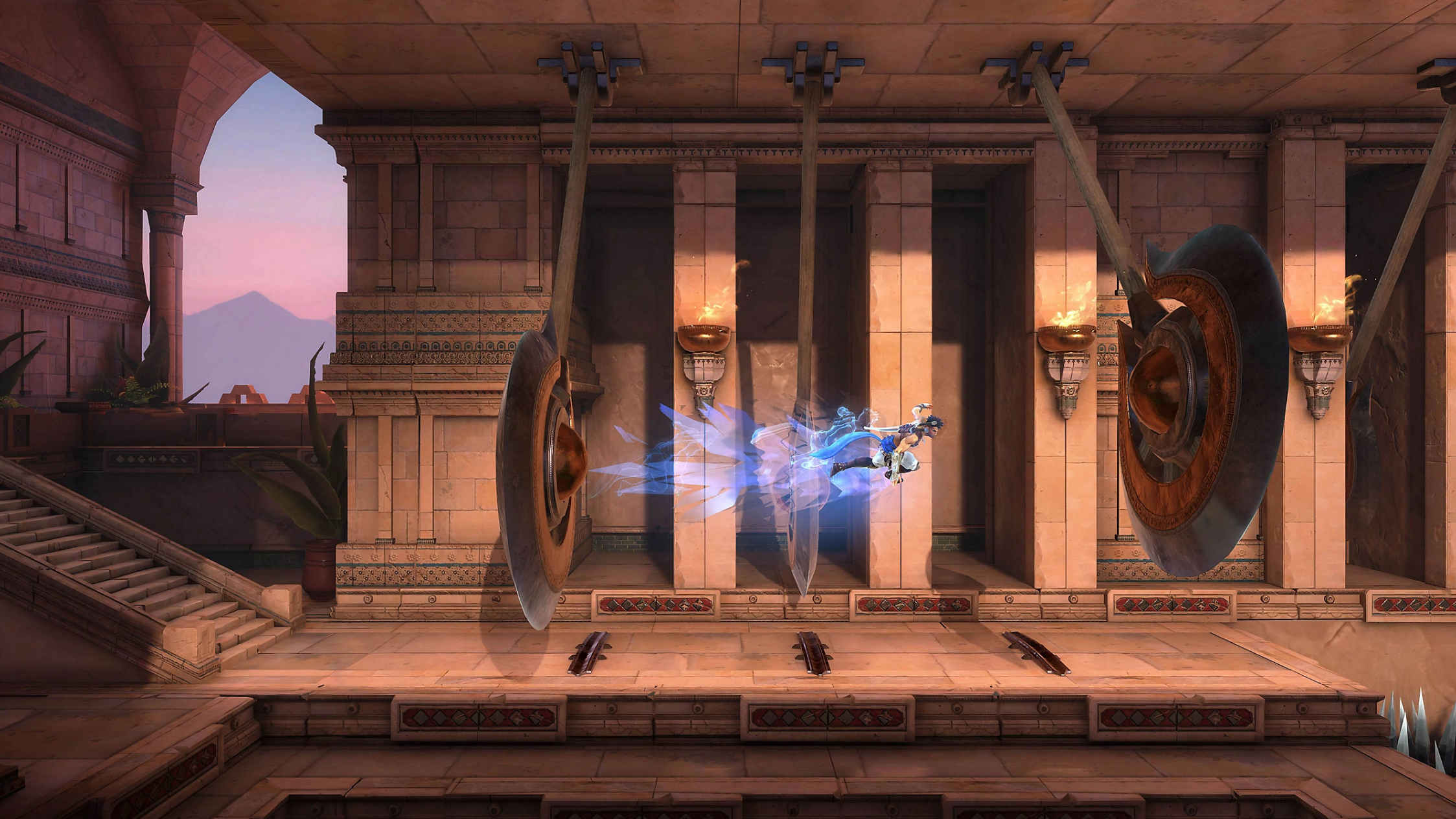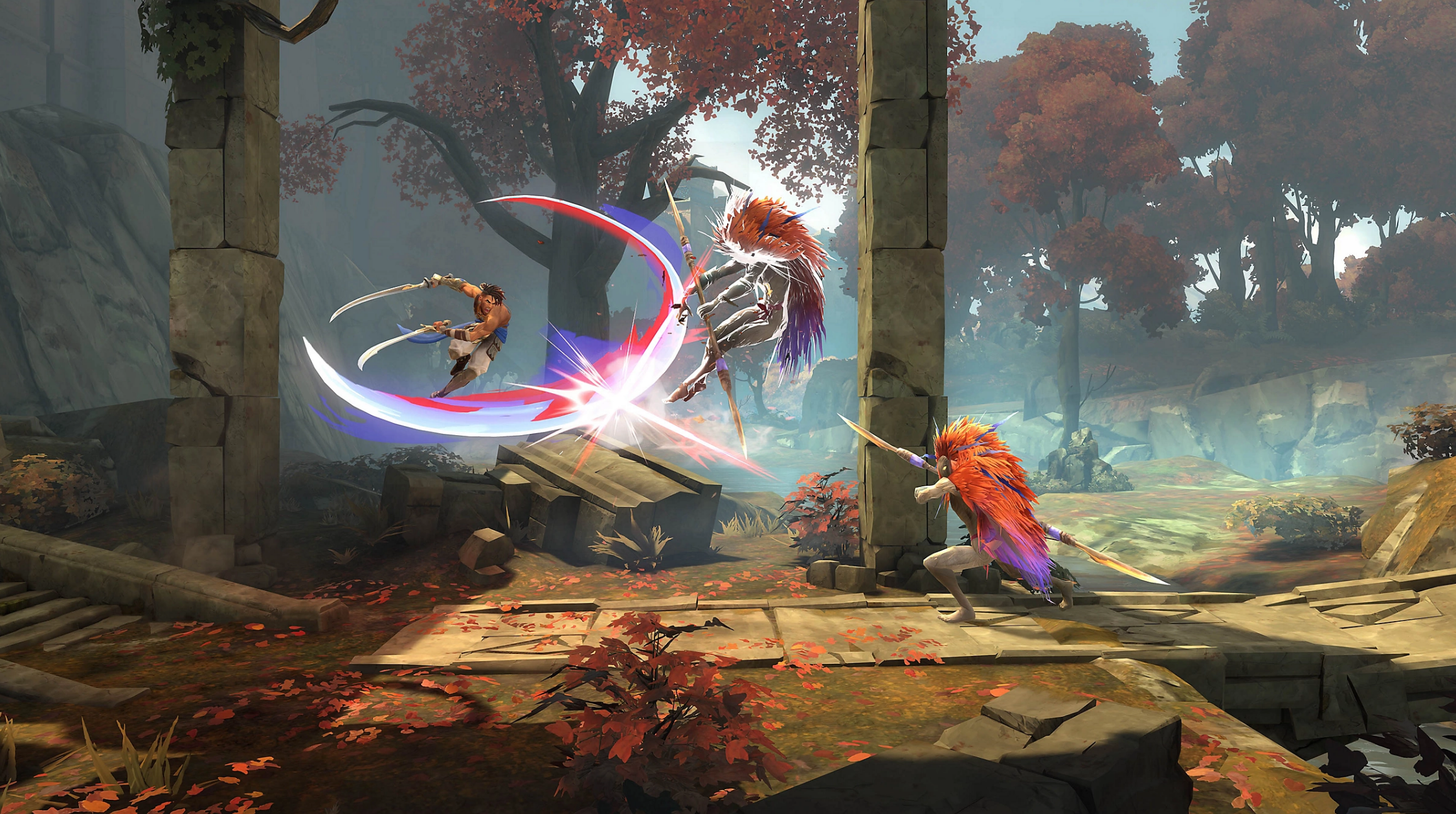Most video games follow a linear arc of difficulty, culminating in moments where mastery is demanded to, say, slay the final boss. But the hardest moment in Ubisoft’s brilliant Prince of Persia: The Lost Crown is tucked away in a random, innocuous room. There is no sign post warning players what they’re about to encounter, no sense that danger—true danger—lurks.
Towards the end of my time with The Lost Crown, I was doing clean up. The final boss door had opened, but equipped with every upgrade and special power the game had to offer, it was time to fully explore the map and nab The Lost Crown’s secrets. One such secret was a little vertical section of the map. Maybe there was a health upgrade? Who could say? The unknown awaited!
What I found was…a nightmare, really. There’s no other way to describe it. A grueling endurance test that pushed my skills—and patience—to the limit. A seemingly never ending cascade of platform puzzle challenges requiring dexterity and a keen eye in equal measure. For every section you complete, the game merely takes a brief pause, only to ask more of you.
There is a level in The Lost Crown called “The Impossible Climb,” and yet, this is harder.
Often, it felt like a sick joke by the developers. But as someone who adores platformers, especially difficult ones, it was a sick joke I was happy to laugh at. I spent an hour working my way through the sequence’s traps, finally finding my way to the other side, letting me share this:
Warning: This does spoil some of the powers you acquire in The Lost Crown:
Finishing this incredible (and incredibly hard) sequence in Prince of Persia: The Lost Crown last night felt like it took literal years off my life. pic.twitter.com/ipbu5g8Dzv
— Patrick Klepek 🎃 (@patrickklepek) January 30, 2024
I’m sweating just watching this again, so I tracked down the person responsible for this.
“At the beginning, we wanted to create a series of difficult challenges for players who like very challenging platforming sections,” said The Lost Crown level designer Tom Guiraud. “We designed a series of rooms and discussed about how we could sequence them. At some point, some of the challenges were accessible after the acquisition of the ‘Shadow of the Simurgh’ time power, and players could come back each time they got a new power, to access a new room. But at the end of the production, we found that it was better for the game to trim it down to the unique situation we have today and improve it, to make it as memorable as possible.”
In other words, the developers chose violence. There was a scenario in play where people worked their way through this, piece by piece, as a reward for advancing the game’s broader progression arc, but instead, they devised what Guiraud described as a “Resident Evil room.”

“Doing something hard in level design is quite easy in a way,” said Guiraud. “It’s much more difficult to design something interesting and just challenging enough, so the player enjoys the game in the most natural way.”
Guiraud claims the sequence is meant to be “challenging but not insanely hard,” but we’ll, uh, have to agree to disagree there. Which isn’t to suggest it’s not good, because it very much is. It’s one of the most satisfying and thrilling accomplishments I’ve had in a game in a minute.
Earlier, I mentioned how the sequence seems to “pause.” This is intentional, as Guiraud described the various beats of the challenge being intentionally broken up into “chapters.”
“Each chapter begins with a relatively simple sequence, and then it goes crescendo,” said Guiraud. “We did that to theoretically make it possible to do the whole challenge in the first try, and so the player is not forced to learn the full order of sequences—it would have been different if we had mixed all the themes during the whole challenge.”
I would like to shake the hand of the person who did this sequence in a single try.
“It could have been longer, with more puzzly sequences!” said Guiraud, with a threat I was not anticipating in an interview. “The challenge was tested by multiple level designers each time we added a new chapter, so the correct length for the whole challenge was easy to find. The tools also made the addition or removal of sequencing quite easy so we could iterate quickly.”
The “correct length” ultimately came down to two minutes. Two minutes doesn’t seem all that long in a video game that easily takes more than 15 hours, unless you’re rushing. But it’s two minutes when you do it right, and in the midst of executing it, two minutes stretches into an eternity. While I was working through it, time vanished. I’d glance at my phone and realize 20 minutes had slipped away, a rarity for someone who is meticulous about managing their time.
Truth be told, I almost tapped out at one point, telling myself that I’d beat the game, then come back and finish this up. But in my heart of hearts, I knew that if I left, I’d be giving up. It would be an excuse to leave the sequence behind, left unfinished but having regained a sense of peace.

“I think everybody in the level design team finished it quite quickly, in a few tries, with maybe some exceptions,” Guiraud “But keep in mind that, as level designers, we played the game A LOT, and the sequence was made at the end of the production, so everyone had already played thousands of hours. But for other parts of the development team, it remains a really challenging moment.”
I did have one last question for Guiraud, though. When I shared the video of me completing the sequence, the most common refrain from others who’d given up on it was: so, what’d you get?
“WHAT DID YOU EARN FOR THIS?!!! PLEASE TELL ME IT WAS WORTH IT” said one person.
What you get for threading the needle on one of gaming’s most harrowing challenges is…
…a pair of pants. In a game that doesn’t emphasize or reward customization.
When the pants appeared, I laughed; it felt like developers poking fun at the time I’d spent. Not in a mean-spirited kind of way, but certainly the pants weren’t equal to the effort I’d put in. Did Ubisoft see it that way? Did the developers on The Lost Crown have a reason for this choice? But all Guiraud shared about the pants was a simple quote, which I’ll share with you:
“It’s not the destination, it’s the journey” – Ralph Waldo Emerson
So it was a little mean-spirited.
